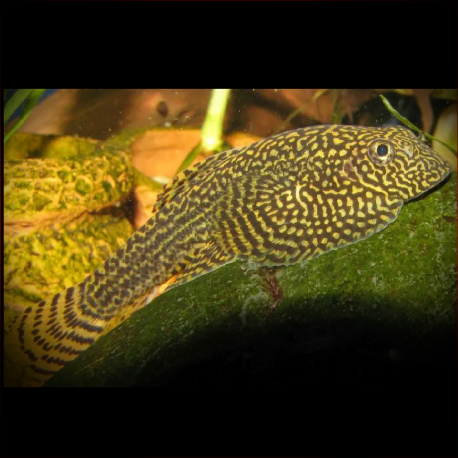More info
Datasheet
| Minimum Tank Size | 80 litres / 21.13 US gallons |
| Maximum Size | 7.0cm / 2.76inches |
| Temperature | 18°C / 64.40°F - 24°C / 75.20°F |
| Hardness | 1.01dgH / 18ppm - 10.03dgH / 179ppm |
| pH | 6.0-7.5 |
Behaviour
In terms of behavior, Sewellia spp. are dominant among the 'sucker belly' group of loaches, displaying territorial tendencies, especially towards securing prime feeding spots. Dominance battles are a spectacle to witness, with males typically asserting dominance in belly-to-belly stances. Sewellia spp. can be housed with small, pelagic cyprinids, certain stream-dwelling gobies, and rheophilic catfishes, though compatibility with other loach species varies, requiring research before cohabiting. Grouping Sewellia spp. in aggregations of 6 or more mimics their natural behavior, reducing the likelihood of aggression and boosting overall confidence within the group.
Feeding and Diet
The natural diet of Sewellia spp. primarily comprises benthic algae and associated micro-organisms, with occasional opportunistic consumption of insect larvae. To replicate this diet in captivity, a mixture of natural ingredients bound with gelatin, rich in fresh vegetables and Spirulina, is recommended. Maintaining a mature aquarium with ample algae-covered surfaces is crucial for long-term success. If algae growth is insufficient, a separate tank for algae cultivation may be necessary to supplement the main tank. Care should be taken when acquiring emaciated specimens, ensuring they receive a constant source of suitable foods in the absence of competitors for successful recovery.
Reproduction & Dimorphism
Sewellia spp. are relatively easy to breed in aquarium settings, with successful attempts reported with various species. Controlled breeding efforts benefit from a mature substrate, such as large grade, rounded river gravel that allows for egg development and provides refuge for fry. Courtship involves intricate displays by the male, culminating in the release of eggs and milt into strong water currents. Females exhibit a broader body compared to the more slender males, who develop soft tubercules on the pectoral fins as a distinguishing feature. Fry feed on infusoria initially, transitioning to larger food items as they mature, exhibiting a less compressed body shape and reduced barbels compared to adults.
Habitat and Distribution
Sewellia Albisuera is restricted to shallow, fast-flowing headwaters and tributaries in central Vietnam's Thu Bon river system. These habitats feature clear, oxygen-rich water with biofilm-covered surfaces, rocky substrates, and minimal aquatic plant presence. While some streams may experience turbidity during heavy rainfall, Sewellia Albisuera thrives in well-oxygenated, turbulent waters with fast flow rates. Known for their adaption to life in fast-flowing water, Sewellia spp. possess specialized anatomical features, including horizontally oriented fins and a powerful sucking cup formed by the last two pelvic-fin rays, aiding in their ability to cling tightly to solid surfaces.

